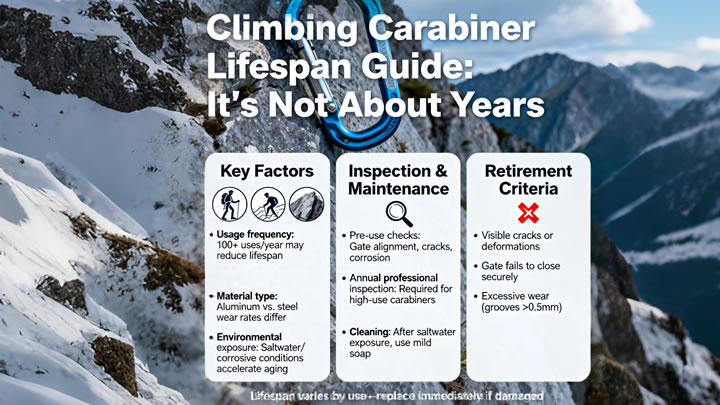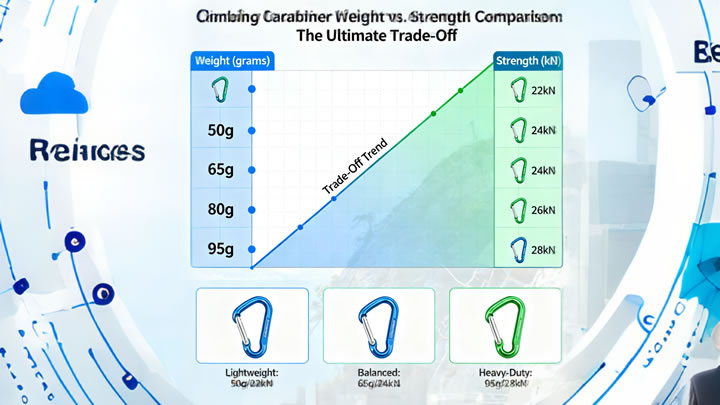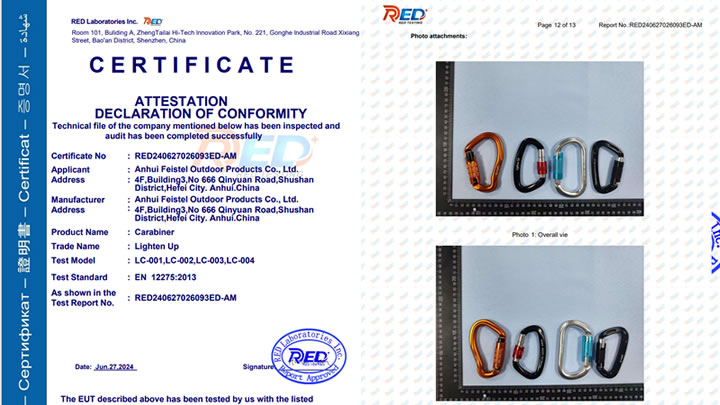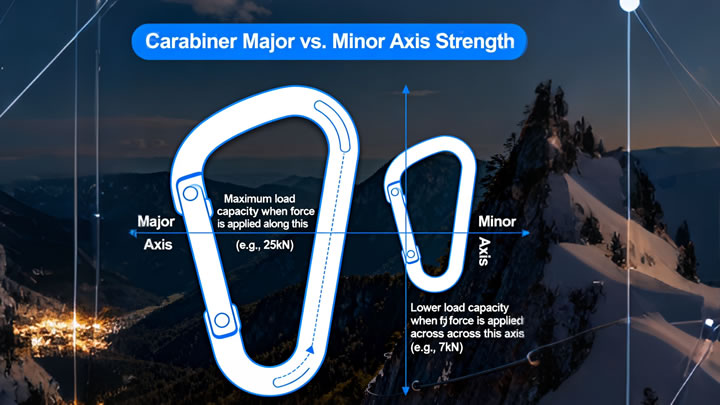What is the Lifespan of a Climbing Carabiner? It's Not About Years
One of the most common questions in a climber's gear maintenance routine is, "How long do my carabiners last?" It's a logical question, but the answer isn't found on a calendar or a stamped expiration date. Unlike a carton of milk, a climbing carabiner's lifespan is not defined by time. Instead, it is a variable dictated by a combination of usage, care, and, most importantly, physical condition. Understanding this distinction is the key to managing your gear safely and effectively. This article will guide you through the factors that truly determine when a carabiner has reached the end of its serviceable life.
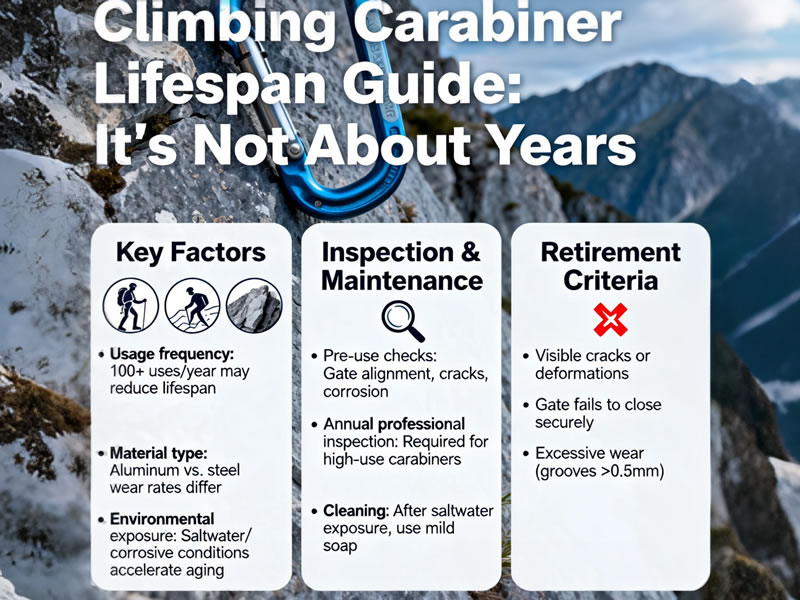
The Myth of the Expiration Date
First, let's dispel a common misconception: climbing carabiners do not have a manufacturer-set expiration date. You will not find a "best by" year on a Black Diamond, Petzl, or Camp carabiner. A carabiner that sits in a dark, dry gear closet for ten years, untouched and undamaged, does not automatically become unsafe. The primary agents that end a carabiner's life are mechanical damage and wear, not the passage of time.
The True Determinants of a Carabiner's Lifespan
The functional life of your carabiner is determined by several key factors:
- Frequency and Type of Use: A carabiner used daily by a guide on rough granite will have a much shorter lifespan than one used monthly at an indoor gym. Aid climbing, where carabiners are constantly weighted and unweighted and rubbed against other gear, is particularly taxing compared to occasional sport climbing.
- Fall History: The Shock Load Factor: This is a critical element. While carabiners are designed to withstand massive forces, a severe fall—especially one that exceeds the climber's weight significantly—can create micro-fractures in the aluminum alloy. These fractures are invisible to the naked eye but can compromise the metal's integrity. A carabiner that has endured a factor 2 fall or any other high-impact shock load should be retired immediately.
- Accidental Damage: Drops and Impacts: A less obvious but equally dangerous event is dropping a carabiner onto a hard surface from height. A fall onto a hard floor, or worse, a rocky ledge, can create tiny stress fractures or chips, particularly around the gate nose, which is a critical and delicate component. If you drop a carabiner from any significant height, its reliability is no longer guaranteed.
- Chemical Exposure: Exposure to certain chemicals can lead to stress corrosion cracking, especially in high-strength aluminum alloys. While rare for most climbers, contact with harsh solvents, acids, or even saltwater over time can potentially weaken the metal.
The Retirement Checklist: Signs Your Carabiner is Done
Your carabiner will tell you when it's time to retire. You just need to know what to look for. Perform this inspection regularly, especially before and after a significant climb:
- Cracks: Any visible crack, no matter how small, is an immediate retirement trigger. Pay close attention to the spine and the gate.
- Deep Gouges or Grooves: Light surface scratching is normal. However, deep gouges, especially those that feel sharp to the touch, act as stress concentrators and can be the starting point for a catastrophic failure.
- Gate Malfunction: The gate is the heart of the carabiner's safety.Stickiness: The gate should open and close smoothly and snap shut decisively. Any grit, stickiness, or sluggish movement needs to be addressed and, if not resolved, warrants retirement.Play/Wobble: Excessive side-to-side or in-and-out play in the gate can indicate worn rivets or a damaged frame.Failure to Lock: For locking carabiners, the locking mechanism must function perfectly every time. If it fails to engage fully or is difficult to operate, the carabiner is no longer safe.
- Worn Pivot Points: Significant wear at the points where the gate connects to the body can change the gate's alignment and strength.
- Any Deformation: If the carabiner is bent or misshapen in any way, it has been loaded beyond its elastic limit and must be retired.
The Golden Rule: When in Doubt, Throw It Out
The most important principle in gear maintenance is one of conservative risk management. A carabiner costs between $10 and $25. Your safety is priceless. If you have any doubt whatsoever about a carabiner's history or its current physical integrity, the only correct course of action is to retire it permanently.
You can render a retired carabiner safe by bending it with a vice or striking it with a hammer, then clearly marking it with tape or paint before disposing of it. This prevents it from being mistakenly used again.
Conclusion
The lifespan of your climbing carabiner is a story written in its scratches, its gate action, and its history of impacts. By shifting your focus from an arbitrary timeline to a diligent practice of inspection and honest assessment, you take full ownership of your safety. Your gear is your partner on the rock; learning to listen when it tells you it's tired is a skill as fundamental as any climbing technique.

